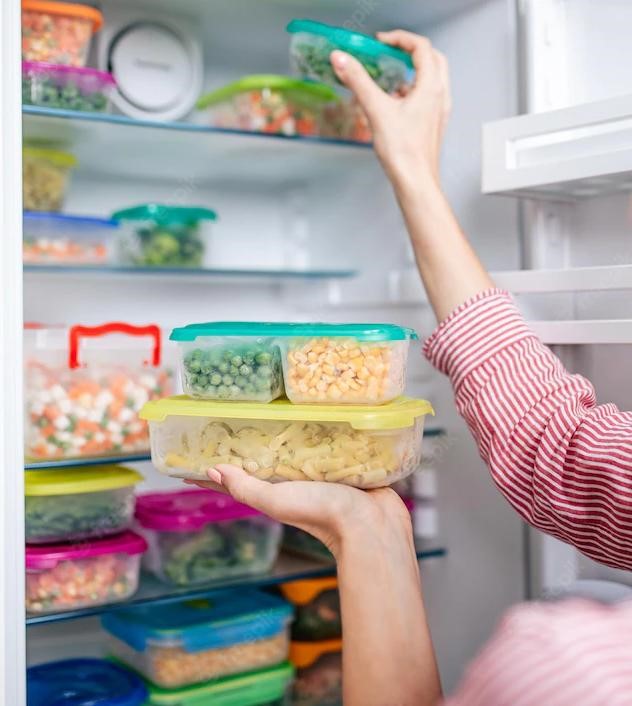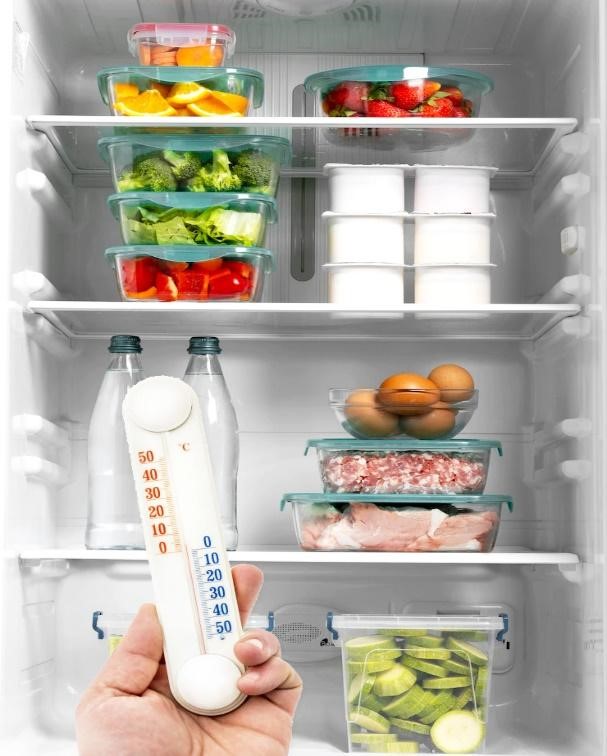
Food Safety Focus (190th Issue, May 2022) – Article 2
Preserve Food by Freezing – How to Handle Frozen Food Safely
Reported by Miss Amy CHENG, Research Officer, and
Mr. Kenneth YIP, Scientific Officer, Risk Communication Section,
Centre for Food Safety
Aside from canning, freezing is a common means for preserving food. Unlike canning, however, freezing not only aids in maintaining food quality, but also preserves the viability of some disease-causing microorganisms. This article discusses how freezing extends the shelf life of food and the precautions that consumers should take when handling frozen food.
How Does Freezing Preserve Food?
Freezing extends the shelf life of food as storing food at -18 oC can inactivate enzymes and microorganisms including bacteria, yeasts and moulds in food. By freezing, the water in food turns into ice crystals and becomes unavailable to microorganisms that need it to grow. Parasites like Trichina can also be destroyed at freezing temperatures. However, freezing does not kill bacteria and viruses, and viruses like norovirus remain infectious even at freezing temperatures. Besides, any microorganisms present can also become active again when the food is defrosted.
Blast freezing is used commercially to freeze food such as fruits, meat and fish quickly, with the use of high velocity cold air at -30oC to -40oC. Food can be frozen in a blast freezer within three hours, which is less than half of the time required for a conventional freezer. The benefit of blast freezing is that it better ensures food quality. Fast freezing processes form smaller ice crystals in food, which reduces cell damage and preserves food texture.
How Long Can Food be Frozen?
Foods such as meat can be kept in the freezer at -18°C or below for 6 to 12 months as recommended. Keeping times vary depending on the food, and product labels generally provide the indication of keeping time. Freezing itself in general does not destroy nutrients. There is only little change in nutrients such as protein value in meat and poultry during freezer storage.
Some may be concerned about food becoming tough, shriveled, discoloured in spots, or covered in ice crystals when stored in the freezer. These are signs of freezer burn which affects food quality but not safety. Food with colour change is safe to consume, while freezer-burnt parts can be removed before or after cooking as desired. To avoid freezer burn, wrap or package the food properly before freezing.
Defrost Frozen Food Safely
While bite-sized foods like dumplings and mixed vegetables can be cooked without defrosting, bigger items like raw meat and poultry must be properly defrosted before cooking. A longer cooking time is required if the food is still frozen or partially frozen to prevent the outside of the food being cooked, but the interior undercooked and harbouring harmful bacteria.
Frozen food should be defrosted in the refrigerator at 0°C - 4°C to inhibit bacteria growth during defrosting. Other alternatives include defrosting under cold running water or in a microwave oven. When defrosting, frozen food should be packed in a leak-proof container and separated from other food to prevent cross-contamination.
Foods thawed under running water or in a microwave oven should be cooked immediately after defrosting as they may be exposed to the Temperature Danger Zone between 4°C and 60°C that favours microbial growth. For frozen ready-to-eat items, such as raw oysters and sashimi, they should be defrosted in the refrigerator to stay away from dangerous temperatures since they will not be cooked further. Food should not be defrosted at room temperature. Do not refreeze defrosted food unless it has been properly thawed in refrigerator.


Figure 2: Proper wrapping and fridge temperature (0 - 4°C) when defrosting food.
Key Points to Note
- While freezing inactivates enzymes and harmful microorganisms in food, it does not kill bacteria and viruses. Proper handling of frozen food is essential.
- Defrost frozen food inside the refrigerator at 0°C-4°C is the preferred method. Defrosting in the refrigerator may take time and need to plan ahead.
- Defrost using a microwave oven or cold running water are possible options but the food should be cooked immediately after defrosting.


